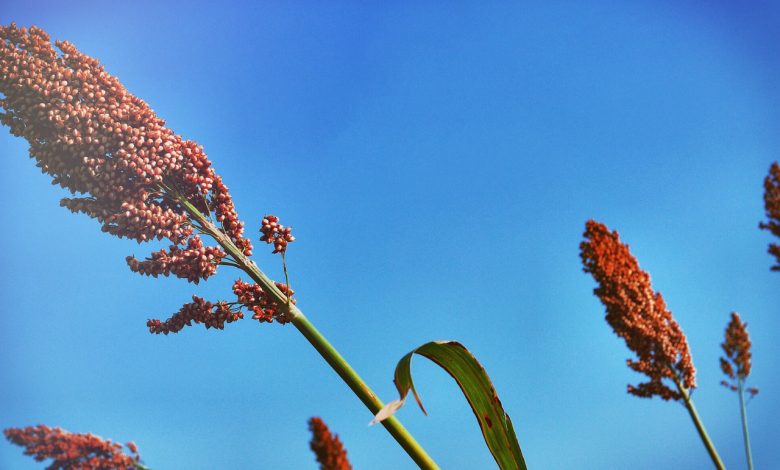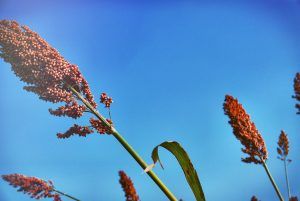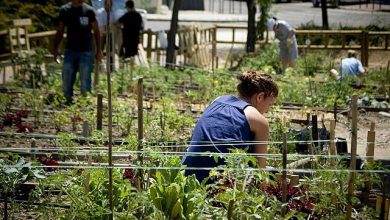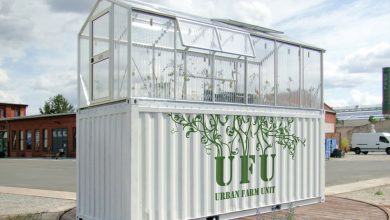Aloe Ferox: [Cultivation, Care, Irrigation, Substrate, Pests and Diseases]

 Aloe ferox represents a species of characteristics very similar to aloe vera that we all know.
Aloe ferox represents a species of characteristics very similar to aloe vera that we all know.
Its texture is almost identical and it has a series of similar planting conditions, such as the fact that it is able to adapt easily.
Being originally from Africa, it has a predilection for warm climates and it does not represent any problem that it is located in full sunlight.
So if you are looking for a plant with exceptional characteristics like this one, pay attention to all the information that we have gathered for you.
Important points when sowing Aloe Ferox
- When? In spring or summer.
- Where? In full sunlight.
- How do we prepare the land? With rocks and, if it is very clayey, adding a little sand.
- How should we water? With a small amount of water, only enough to moisten the ground a little.
- How often do you have to water? In summer, up to twice a week. In winter it is not necessary.
- What pests and diseases does it have? Very resistant to all kinds of pests or diseases.
Characteristics of aloe ferox
 Aloe ferox has unique properties and creates an exotic atmosphere at home. The plant belongs to the large succulents, capable of reaching a height of three meters.
Aloe ferox has unique properties and creates an exotic atmosphere at home. The plant belongs to the large succulents, capable of reaching a height of three meters.
The leaves are thick and massive, and the peduncles reach 80 cm. The flowers of this variety of aloe are bright, orange or red in color. Tubular flowers are especially good when the plant releases several brushes at the same time.
From other types of aloe, this variety is different not only in size. Its juice has a high bitterness, the color of the leaf can be marshy and even brown. The plant is used for medicinal purposes, and is therefore grown especially on plantations.
At harvest, the weight of a single leaf can reach 2 kg.
When to sow aloe ferox?
Although it is a species that is capable of withstanding the winter cold, it is not recommended to place it in such unfavorable conditions at the beginning.
In addition, it must be considered that from the moment the seeds are planted until the seedling is obtained, it can take up to six months.
Where to plant aloe ferox?
Aloe ferox should be kept in direct sunlight as it recreates its original ecosystem.
It is not necessary to protect it against changes in temperature because it is capable of adapting to the highest temperatures in summer and also to the cold in winter.
How to prepare the land?
Conditions for aloe ferox to thrive include a rocky environment and preferably low humidity.
This means that you can prepare a space within your garden where to establish it.
It is a species that will also tolerate very well being near walls, fences, even among bushes, as these are part of its natural environment.
Care must be taken that the soil is not excessively clayey, since those with a sandy structure are better for it.
As for the pH, acids will work well for it, although as we have said it is a very adaptable species and could also be established in alkalines.
How do we water aloe ferox?
The risks will be established based on the time of year that is going through, because being a desert species it is not particularly demanding with this issue.
During the summer it is advisable to keep the space hydrated, but without approaching flooding.
In fact, when there is rain, this amount of water will be more than enough to give it the humid environment it needs.
In the case of winter seasons, irrigation becomes unnecessary and it is best to suspend it until the weather is warm again.
How often do we water?
In summer, watering can be up to twice a week depending on the degree of temperature that exists.
This frequency will be reduced to a weekly in autumn, until generating a total suspension in winter.
How to plant aloe ferox step by step?
- Aloe ferox is planted using selected seeds. This is a method that gives good results because, in fact, it is its natural way of multiplying.
- To achieve success, it will be necessary to comply with the following procedure:
- Prepare seedbeds with universal substrate and a little river sand to improve drainage.
- Place the seeds at a rate of two or three per seedbed and cover them with sand.
- Moisten the substrate so that the water penetrates to the bottom to provide a humid environment for the seeds.
- Maintain this process of constant humidity while they develop and germinate.
- Wait for the seedling to acquire sufficient size and strength to proceed with the transplant to a pot or, failing that, to the prepared area to establish it definitively.
- Part of the fleshiness that aloe ferox plants develop in their leaves is due to the humidity that they manage to absorb from the environment.
That is why it is so important to keep the spaces sufficiently hydrated in the early stages of growth.
What care does aloe ferox need?
- As it is a wild-type plant that is projected endemically in Africa, it is common to think that fertilization is not applicable in your case.
- The reality is that it can survive without it, but giving it a layer of compost during the growth and flowering phase will help a lot.
- As with many other species, this is an action that will generate benefits to optimize its growth.
- On the other hand, the number of leaves that aloe ferox usually develops is limited, as well as the fact that it comes from a single stem, so pruning is not necessary.
- In case you want to remove a leaf to use it for its medicinal properties, for example, you have to be careful with the cut . This will prevent the plant from wilting due to damage to its structure.
What pests and diseases affect aloe ferox?
As in the case of Aloe Vera, Aloe Ferox is incredibly resistant to all kinds of pests and diseases.
Based on its original reality, it is a species that may never receive care from anyone.
However, this reality is not an impediment for it to survive and multiply almost effortlessly.
One of the most striking characteristics of aloe ferox, and that separates it from aloe vera, is that it produces impressive orange inflorescences.
However, it has a complex detail in the structure of the leaves, which are the pointed teeth (just like aloe vera) with which caution must be taken.
This has led some populations to give it the name of fierce aloe.
This plant also has many medicinal uses and healing powers, especially when it comes to skin damage, such as burns.

![Photo of Bordeaux mixture: [Origin, Characteristics, Uses, Preparation and Application]](https://www.complete-gardening.com/wp-content/uploads/2021/06/Como-se-origina-el-caldo-bordeles-390x220.jpg)


![Photo of Cactus Cuttings: [Concept, Period, Rooting and Planting]](https://www.complete-gardening.com/wp-content/uploads/2022/08/cactus-cuttings-concept-period-rooting-and-planting-390x220.jpg)